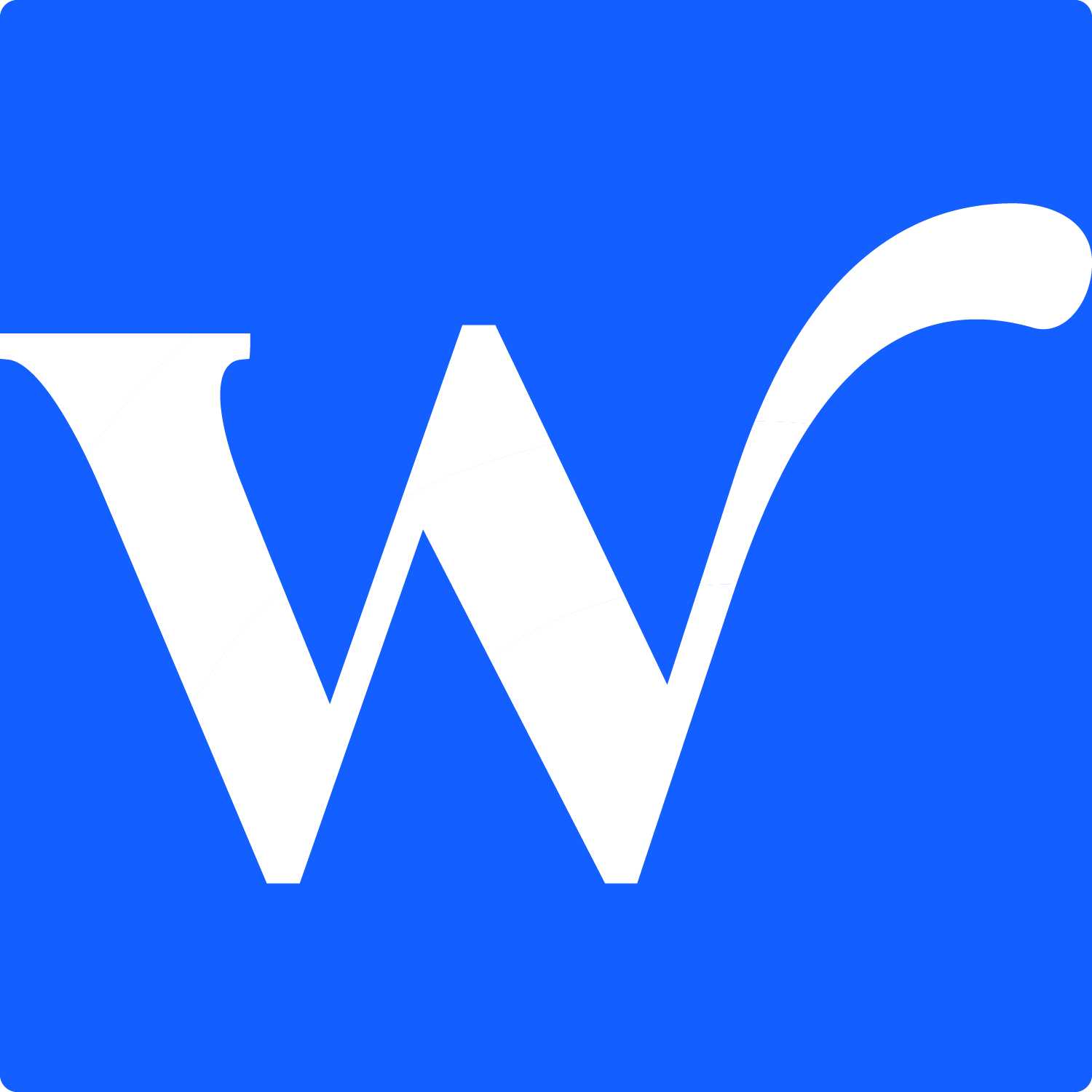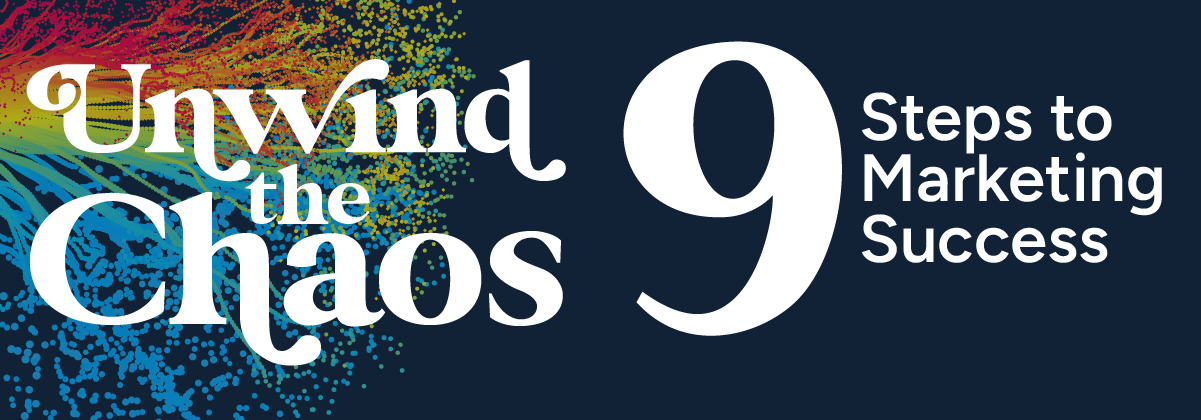If you’ve ever tried to sell something online, you know the importance of crafting compelling calls-to-action, but have you considered the true power of language in driving engagement and conversions?
By understanding the psychology behind persuasive communication and employing proven techniques, you can create calls to action (CTAs) that not only capture attention but also inspire action.
Let’s explore the key elements that make language (AKA what you say and how you say it) so essential. Why? Because once you harness its potential, your marketing efforts will soar to new heights with irresistibly clickable CTAs.

If you struggle with writing clickworthy calls to action, take our class, Compelling Calls to Action. It will make a HUGE difference.
Key Takeaways
- Compelling language captivates, persuades, and inspires action from your target audience
- Effective CTAs bridge persuasive content with desired actions, driving conversions, and can serve as a template for future marketing campaigns
- Compelling CTAs tap into audience motivations and desires, creating a strong connection
- Urgency in CTAs, backed by data and testimonials, prompts immediate action
- Compelling language in CTAs focuses on benefits and value propositions, solving customer pain points
An effective CTA is all about language
Words wield immense power. Learning to use key phrases enables you to captivate, persuade, and inspire your audience to act.
The art of crafting compelling language lies in understanding the nuances of human psychology and the impact of carefully chosen words on the reader’s mind.
It’s not about what you say, but how you say it that makes all the difference.
To master the power of language, you must explore the intricacies of word choice, sentence structure, and tone. Each word carries its own weight and meaning.
The way you arrange them can greatly influence the reader’s perception and response.
Simple tactics that make a big difference, such as:
- Active voice (example: we formulated our framework = active). This is more effective than passive voice (example: our framework was formulated).
- Strong verbs (example: gave = strong) are the past tense without an article (example: to give = weak verb).
- Vivid adjectives (examples: silky, smooth, bitter, tangy ...) you can almost feel, taste, or see.
When you use these tactics, it creates a sense of urgency and enthusiasm that compels the reader to act by clicking that all-important CTA button.
The more you know about what drives your audience’s needs, desires, and pain points, the easier it's to craft deeply resonant language.
By addressing their specific concerns and offering solutions in a clear, concise manner, not only do you establish trust and credibility, making your call-to-action that much more irresistible.
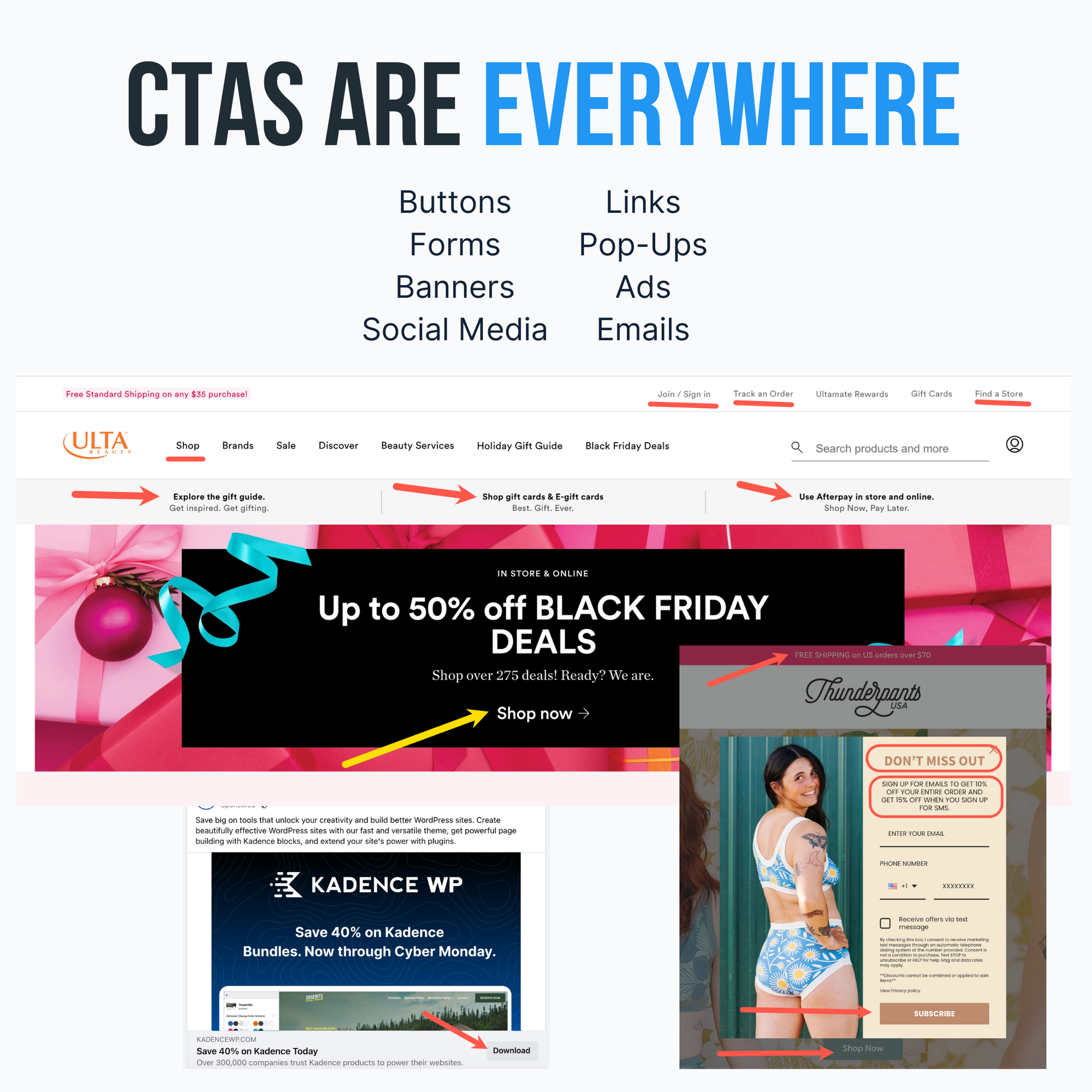
Crafting an Irresistible Call to Action
Now that you understand the power of language, let’s explore the art of crafting irresistible calls-to-action (CTAs) that compel your audience to take the desired step.
Your CTA is the bridge between your persuasive content and the action you want your readers to take. It’s a critical component that can make or break your conversion rates.
To create a winning CTA, you must focus on clarity and conciseness. Use action-oriented language that leaves no room for ambiguity. Instead of ‘click here,’ (or ‘check it out,’ a phrase despised by Kate Bradley Chernis) opt for specific phrases like ‘Download your free e-book’ or ‘Sign up for our webinar.’
Read your landing page or web page out loud. Does it make sense?
Now, close your eyes. Are your calls to action descriptive?
The problem with ‘click here’ or ‘check it out,’ is that neither is descriptive enough to compel action. Click where? Check WHAT out?
Make your CTAs visually distinctive by using contrasting colors, bold fonts, or eye-catching buttons.
Consider your audience’s stage in the buyer’s journey when crafting your CTAs.
For top-of-the-funnel leads, use low-commitment phrases like ‘Learn more’ or ‘Explore our solutions.’ As prospects move closer to making a purchase, employ more direct language such as ‘Buy now’ or ‘Get started today.’
The best calls to action connect with your audience
To forge a deep connection with your audience, you must speak their language and understand their unique needs and desires. It’s vital to conduct thorough research into your target market’s demographics, psychographics, and behaviors. By analyzing their preferences, pain points, and aspirations, you can craft CTAs that resonate on a personal level.
Collect testimonials, write case studies, and pay attention to the language your client uses. That’s some of the best content you’ll have.
Compelling CTAs tell people what to do — they tap into the audience’s underlying motivations. For example, instead of a generic ‘Sign up now’ button, consider ‘unlock exclusive benefits today.’ This CTA speaks directly to the desire for privileged access and instant gratification.
Moreover, adapting your CTA language to the specific stage of the customer journey is crucial. A first-time visitor may respond better to a softer CTA like ‘Explore our offerings,’ while a returning customer might appreciate a more direct prompt such as ‘Add to cart now.’
By tailoring your CTAs to the audience's mindset and readiness to engage, you’ll create a sense of understanding and trust that encourages them to take the desired action.
Ultimately, connecting with your audience through compelling CTAs is about demonstrating empathy and providing value.
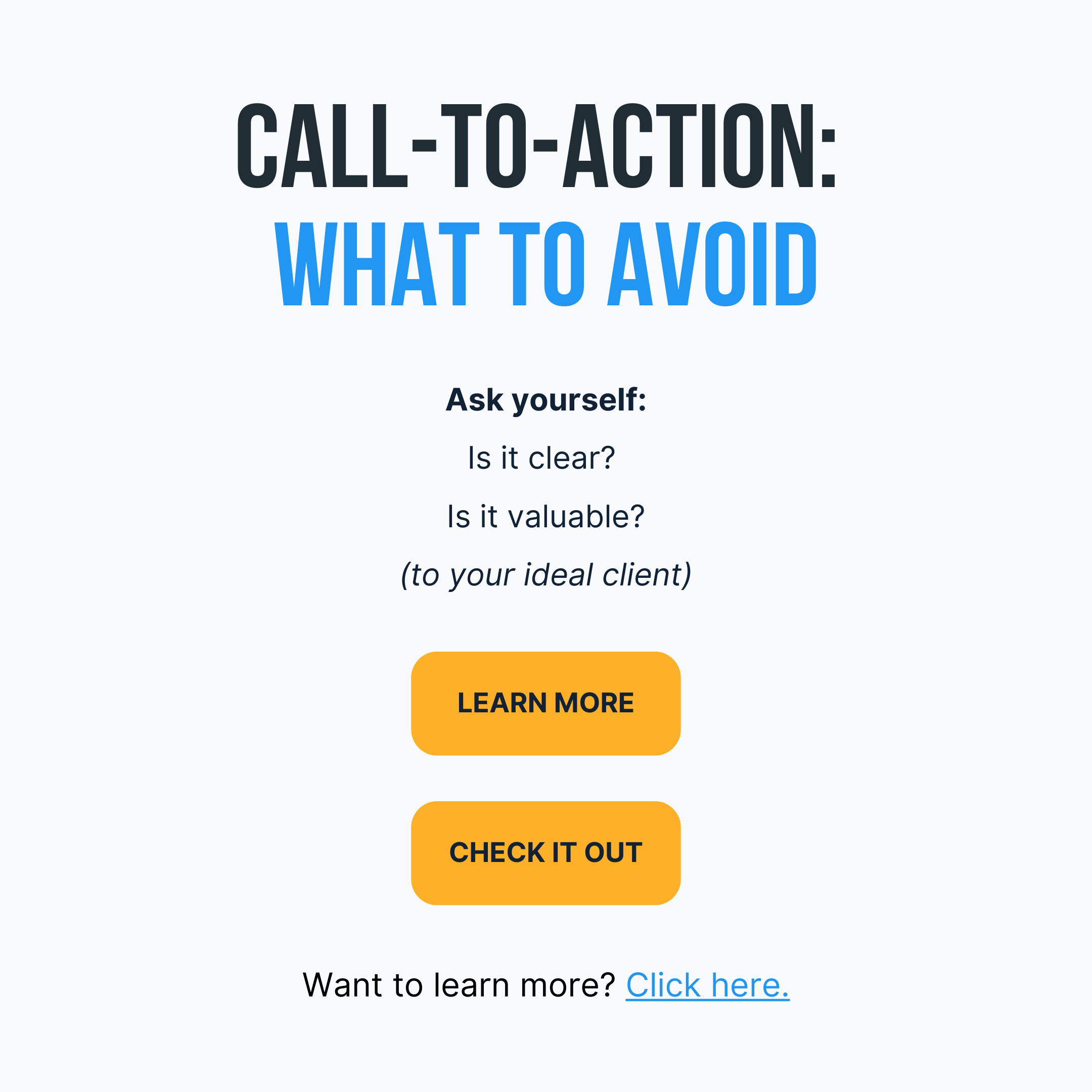
Inspire action with a sense of urgency
Crafting a compelling call-to-action that resonates with your audience is the first step — you must also instill a sense of urgency to spur them into immediate action.
Focus on the time-sensitive nature of your offer or the potential consequences of inaction. Use phrases like ‘limited time offer,’ ‘act now,’ or ‘don’t miss out’ to convey the importance of swift decision-making.
People tend to place a higher value on items they perceive as rare or in short supply. Employ countdown timers, emphasize limited quantities, or reference the number of people already taking advantage of your offer.
Create a fear of missing out (FOMO) by illustrating the potential benefits your audience could enjoy if they act promptly, or conversely, the opportunities they might lose by hesitating. Back up your claims with data, case studies, or testimonials to validate your message.
I’m not a fan of FOMO for the sake of FOMO. Urgency needs to be real to be effective. Constant sales lose effectiveness the longer it goes on.
Offering value and benefits
When crafting calls-to-action, focus on how your product or service solves customers’ problems and saves them time. A well-placed CTA button can enhance this effect.
Highlight the specific benefits they’ll enjoy by taking action, such as increased productivity or streamlined processes.
Use concise, compelling language that clearly communicates the value proposition and motivates prospects to respond.
Solve Problems
Highlight your product’s or service’s unique ability to solve customers’ pain points in your call-to-action. Don’t tout features; instead, emphasize the real-world problems you can solve for them.
Are they struggling with limited time? Understand how you can streamline their workflow.
Frustrated by complexity? Showcase your solution's simplicity.
When you frame your CTA around problem-solving, you demonstrate insight into customers' challenges. This customer-centric approach shows you’ve done your homework. In a crowded market, differentiating yourself as a problem-solver sets you apart. One way to do this is by using a compelling call to action.
Moreover, by positioning yourself as a remedy to their headaches, you trigger a strong emotional response. People are inherently loss-averse — they're driven more by avoiding negatives than pursuing positives. Framing your CTA as a problem-solver taps into this powerful motivation.
A problem-solving CTA reframes the 'act now' ultimatum. Instead of pushing customers to buy, you're extending a helping hand.
You're not hawking a product — you're delivering welcome relief. By combining logic and emotion, a problem-focused CTA becomes extraordinarily persuasive.
Save Time
Freeing up precious minutes — or hours — is an irresistible value proposition to highlight in your call-to-action. By emphasizing how your product or service saves time, you tap into a fundamental desire shared by most people: reclaiming control over their schedules.
In today's fast-paced world, where multitasking has become the norm, any opportunity to streamline processes or remove tedious tasks is met with enthusiasm.
When crafting your CTA, quantify the time savings whenever possible.
For example, instead of simply stating 'saves time,' specify: 'Reduce data entry by 50%,' or 'Cut your weekly planning time in half.' These concrete examples paint a clearer picture of the tangible benefits users can expect.
Additionally, consider highlighting how the time saved can be reallocated to higher-value activities, such as strategic planning or personal development.
By framing your CTA around the concept of 'working smarter, not harder,’ you appeal to your audience’s desire for efficiency and productivity.
Use action-oriented verbs
Action-oriented verbs are the key to crafting compelling calls-to-action that drive your audience to take immediate action. Instead of using passive or vague language, opt for verbs that convey a sense of urgency and inspire your audience to engage with your content.
For instance, rather than saying 'click here,' use phrases like 'discover now,' 'unlock secrets,' or 'claim your free trial,' which serve as more compelling calls to action. These action-oriented verbs create a sense of excitement and encourage your audience to take the desired action without hesitation.
Moreover, action-oriented verbs help you communicate the value proposition of your call-to-action more effectively. By using verbs that highlight the benefits of taking action, such as 'boost,' 'maximize,' or 'transform,' you're not only telling your audience what to do but also why they should do it.
This approach taps into their desire for mastery and improvement, making your call-to-action more compelling and irresistible. Remember, the right action-oriented verbs can make a significant difference in the success of your calls-to-action, so choose them wisely and strategically to optimize your conversion rates.
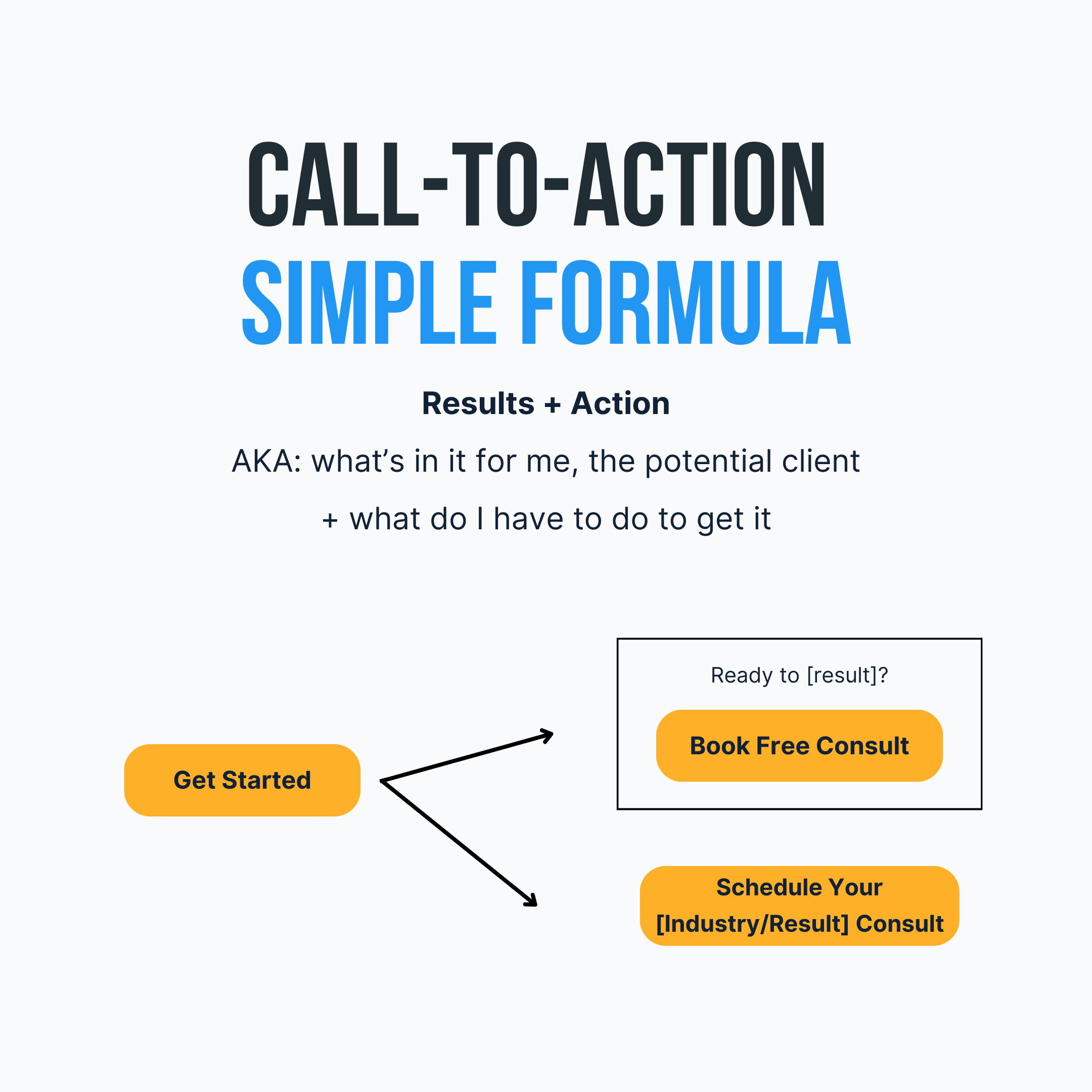
Personalizing your message
By tailoring your calls-to-action to your target audience's specific needs and preferences, you'll forge a stronger connection that compels them to take action. Personalization is key to crafting CTAs that resonate deeply with your intended users.
Consider these three strategies to effectively personalize your message:
- Segment your audience based on demographics, behaviors, and interests.
- Use customer data to address their unique pain points and desires.
- Incorporate dynamic content that adapts to individual user profiles.
When you speak directly to your audience's distinct characteristics, you demonstrate a level of understanding that builds trust and credibility.
By showing that you've taken the time to learn about their specific situation, you're better positioned to offer solutions that truly matter to them. This targeted approach not only captures their attention but also increases the likelihood of a conversion.
Testing and optimizing CTAs
To truly optimize your CTAs, you'll need to test different variations and track the results.
A/B testing allows you to compare two versions of a CTA to determine which one performs better regarding conversion rates.
A/B Testing CTAs
A/B testing is an essential process for optimizing your calls-to-action and making sure they're as compelling and effective as possible. By comparing two slightly different versions of your CTA button, you can determine which one resonates better with your target audience and drives more conversions. Here’s how A/B testing can help you create powerful CTAs:
- Identify the most persuasive language: Test different action words, phrases, and tones to pinpoint the language that motivates your audience to take action.
- Optimize button design: Experiment with various button sizes, colors, and placement to find the most visually appealing and click-worthy combination.
- Refine your offer: Compare different incentives, discounts, or value propositions to determine which one entices more people to convert.
Tracking Conversion Rates
Once you've applied A/B testing to optimize your calls-to-action, It’s important to track conversion rates to measure the impact of your changes and identify areas for further improvement.
Conversion rates are a vital metric. Here's what you'll learn:
- Total number of website visitors
- Percentage of total visitors who take action, including:
- Number of purchases
- Number of newsletter signups
- Number of digital downloads
By tracking this metric over time, you can gauge the effectiveness of your CTAs and make data-driven decisions.
To accurately track conversion rates, you'll need to set up conversion tracking in your analytics platform, such as Google Analytics. Inside Google Analytics, you can define specific goals and assign monetary values to each conversion. This allows you to calculate the return on investment (ROI) of your optimization efforts.
Regular monitoring of conversion rates will help you spot trends, identify high-performing CTAs, and pinpoint areas that need further refinement. Remember, the key to success lies in continuous testing, tracking, and optimization — it's an ongoing process that requires dedication and a keen eye for detail to maximize the impact of your calls-to-action.
Refining CTA Placement
Strategic CTA placement is crucial for maximizing visibility and driving conversions. It's essential to test and optimize the positioning of your calls-to-action.
Consider these three key areas when refining your CTA placement:
- Above the fold: Place your primary CTA above the fold to guarantee it's immediately visible to visitors without requiring them to scroll.
- After key content sections: Position CTAs at the end of important content blocks, such as product descriptions or benefits lists, to capitalize on engaged readers.
- In the flow of the user journey: Integrate CTAs seamlessly into the user journey, making sure they appear at logical points where visitors are primed to act, for example, on the homepage.
Best call-to-action examples
Compelling calls-to-action (CTAs) entice users to take decisive steps towards conversion. You've likely encountered persuasive examples like Netflix’s 'Join Free for a Month' or Spotify's 'Get 3 Months of Premium for Free.' These CTAs leverage the power of free trials to attract subscribers.
Dropbox's 'Sign Up for Free' emphasizes the no-cost aspect, while HubSpot's 'Get Started' implies ease and simplicity.
Apple's 'Buy Now' is direct and action-oriented, perfect for their sleek product pages. Unbounce's 'Build a High-Converting Landing Page Now' combines urgency with a specific outcome. For donations, charity: Water's 'Donate Now and Provide Clean Water' links action to impact.
Evernote's 'Remember Everything' is memorable and benefit-driven, while Trello's 'Sign Up – It's Free' reassures users of no financial commitment. For engagement, OptinMonster's 'Yes, I Want More Subscribers!' Is enthusiastic and mimics user intent.
When crafting CTAs, take cues from these examples. Be clear, specific, and tap into user motivations. Use action verbs, evoke emotion, and highlight benefits. With compelling CTAs, you'll boost clicks, conversions, and overall campaign success.
Now it's your turn to write an effective CTA
Coincidentally, you now have the knowledge to craft compelling calls-to-action that drive results.
By understanding the psychology behind persuasive language, you can transform your CTAs into irresistible invitations to act. Don’t forget to implement the strategies covered here, such as connecting with your audience, creating urgency, and offering value.
Remember, the power of language is at your fingertips — use it wisely, test your CTAs, and watch your conversions soar to new heights.
Need help with a content strategy? Reach out for a discovery call.





